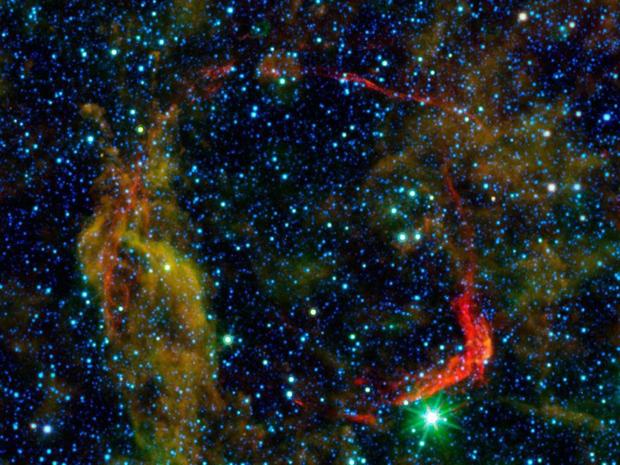2,000-year-old stellar mystery solved
CAPE CANAVERAL, Fla. - Astronomers finally know why the first documented supernova was super-sized.
The exploded star was observed by the ancient Chinese in the year 185, and visible for eight months. It was later found to be a bigger-than-expected supernova remnant, 8,000 light years away.
New observations in the infrared show the explosion took place in a cavity in space. Researchers said that this "hollowed-out cavity" of space was relatively free of gas and dust, thus allowing the stellar shrapnel to shoot faster and farther out into the universe.
The star - similar to our sun - died peacefully and turned into a dense white dwarf. It sucked up material from another star, and then exploded in a supernova.
NASA announced the findings Monday. Four space telescopes were used in the study.
NASA's Spitzer Space Telescope and the Wide-field Infrared Survey Explorer were used to take infrared views of the supernova.
What caused the explosion nearly 2,000 years ago. Astronomers now believe what the locals saw was a Type Ia supernova, in which an otherwise-stable white dwarf, or dead star, got pushed beyond the brink of stability when a companion star dumped material onto it.
"This supernova remnant got really big, really fast," said Brian Williams, an astronomer at North Carolina State University in Raleigh, in a statement. "It's two to three times bigger than we would expect for a supernova that was witnessed exploding nearly 2,000 years ago. Now, we've been able to finally pinpoint the cause."
